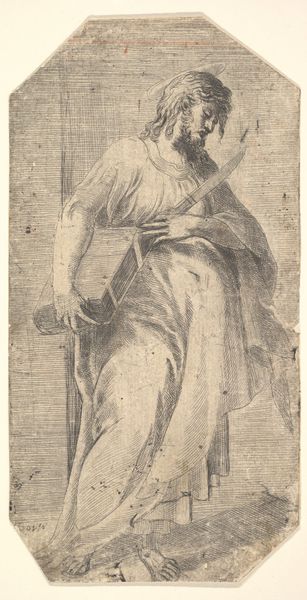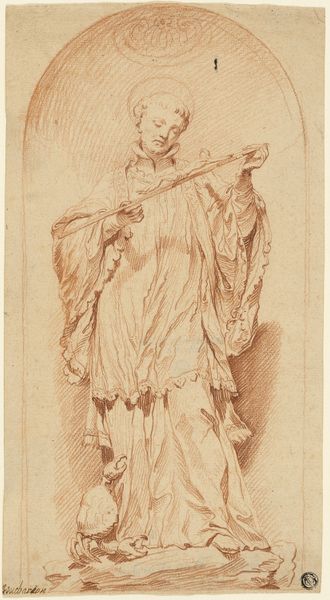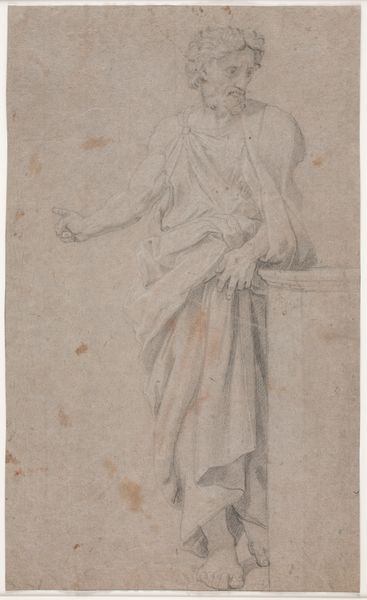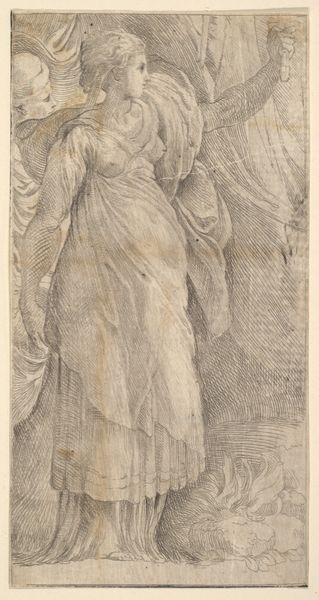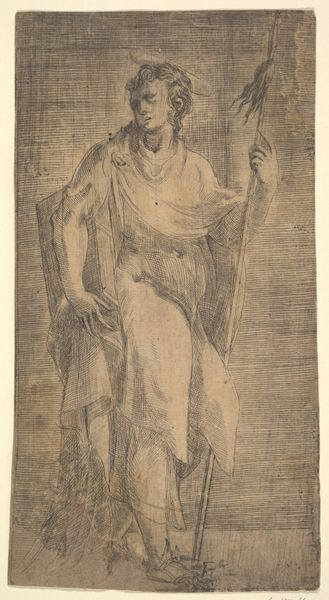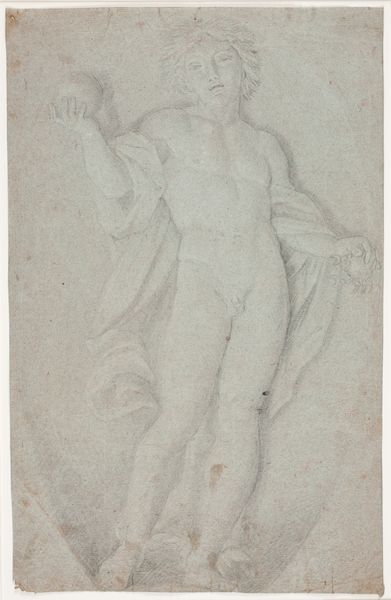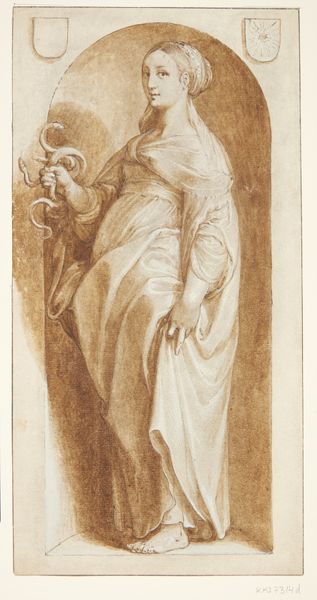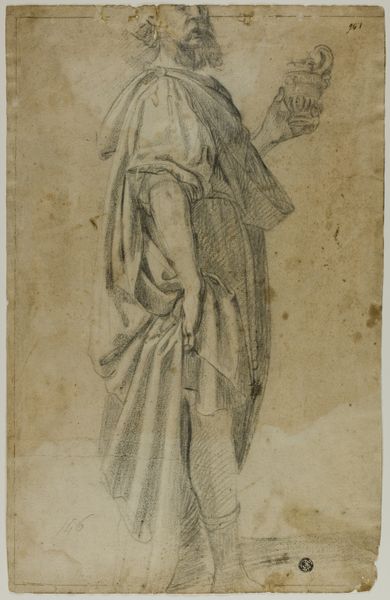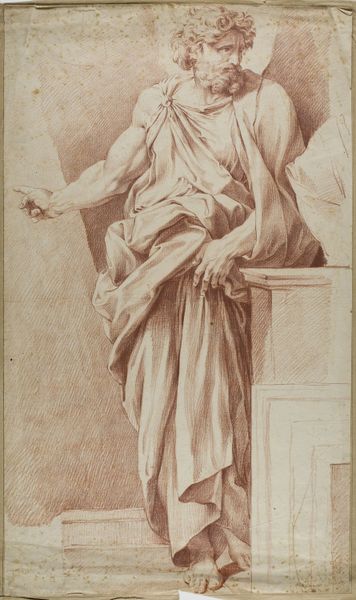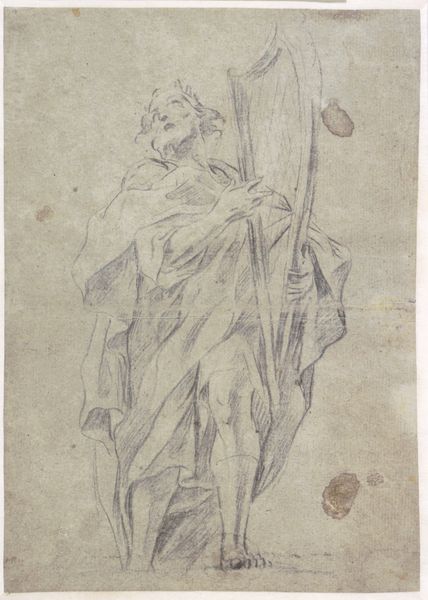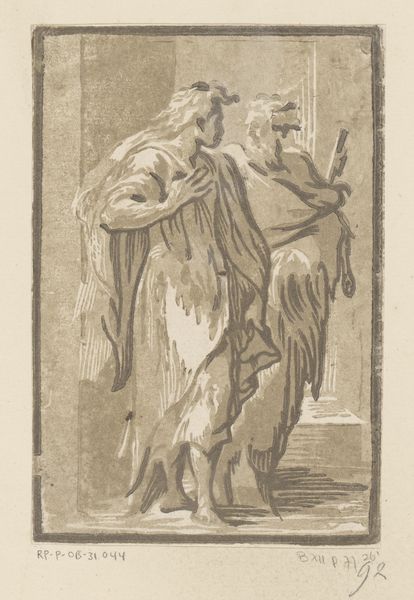
Karyatide med plov. Studie efter en figur på soklen til "Stanza d'Eliodoro" 1686 - 1738
0:00
0:00
drawing, pencil
#
portrait
#
pencil drawn
#
drawing
#
baroque
#
figuration
#
pencil drawing
#
pencil
#
academic-art
Dimensions: 426 mm (height) x 298 mm (width) (bladmaal)
Curator: Before us, we have Hendrik Krock’s “Caryatid with Plough. Study after a figure on the base of ‘Stanza d'Eliodoro’," a pencil drawing believed to have been created sometime between 1686 and 1738. Editor: It’s delicate, almost ghostly. The light pencil work gives the figure a real sense of ethereal form and classical repose. It seems like a memory emerging from the paper itself. Curator: This study holds intriguing historical weight. Consider that Krock was making this after an existing figure, placing himself in conversation with established visual tropes. How does his academic process highlight or challenge Baroque representations of labor and the feminine form? Editor: Looking at the lines and the cross-hatching, the mastery in capturing the way the light defines the figure's draped form. Notice how the subtle shifts in pressure articulate the roundness of her shoulder and the folds in the cloth. It's the tension between the solidity of the object depicted, and the ephemeral nature of pencil as medium, that strikes me. Curator: Absolutely. And think about the Caryatid herself—a structural support disguised as a woman. Here, she’s not just burdened by architecture; she also carries the tool of agrarian labor. What can this visual juxtaposition tell us about the expectations and representations of women and labor during Krock's time, particularly concerning visibility and societal expectations? Editor: I think that’s where the visual composition itself reinforces the narrative. The figure's stance and the deliberate placement of the plough draw our eyes along particular lines, thus inviting a direct gaze, which, ultimately, elevates the ordinary, making it seem almost... divine. Curator: Indeed. Through this work, we engage not only with classical ideals and Baroque aesthetics but also with enduring themes of gender, work, and the burden of representation. Editor: The interplay of shadow and light brings forth enduring and grounding shapes of classical and visual artistry, I suppose.
Comments
No comments
Be the first to comment and join the conversation on the ultimate creative platform.
